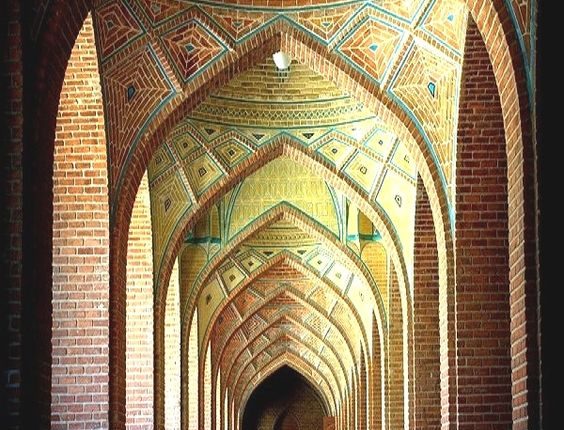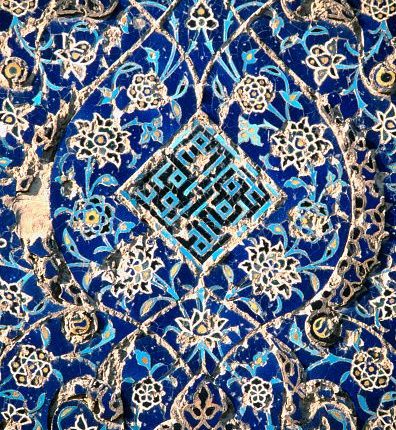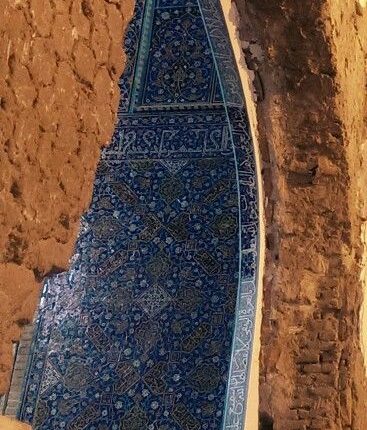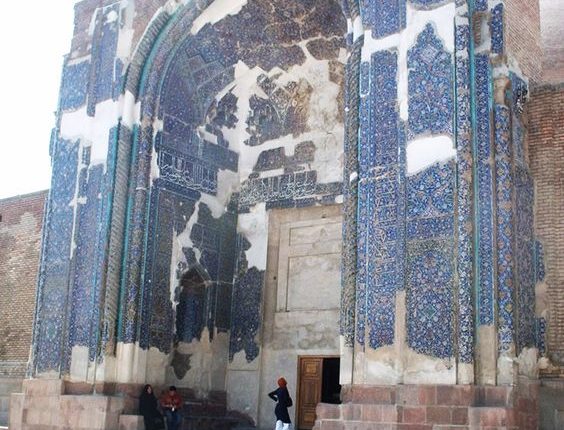Blue Mosque; The Turquoise of Islamic World
Blue Mosque; The Turquoise of Islamic World

Blue Mosque; The Turquoise of Islamic World

The Blue or Jahanshah Mosque is one of the historical mosques of Tabriz dating back to Qaraqouyunlu ruling period in the 9th century A.H. Madame Jean Diulafova, a French architect and archaeologist who traveled to Iran with his wife to conduct archaeological excavations, gave the name of Blue mosque to this place, La Mosquée bleue de Tauris.
According to the inscription on the entrance to the mosque, here was built in 845 A.H. and at the time of Sultan Jahanshah, the most powerful ruler of Qaraqouyunlu dynasty and by the order of his daughter, Salaheh Khanum. The tiling works of the main gate of the mosque have been installed in the year of 870 A.H. Nematullah al-Boubab, the famous calligrapher of the ninth century had written the words on inscriptions. Also, they were installed on the gate under the supervision of Ezzeddin bin Malik Ghapuchi.
Earthquake in 1780 B.C
In the earthquake of 1780 B.C., the mosque was damaged a lot and as a result, the domes of the mosque collapsed.

Rebuilding the Blue Mosque
The ruins of the mosque remained with no use for more than 150 years until the mosque was restored and rehabilitated in 1318 with the aim of preserving and rebuilding the remaining sections, including arches and foundations. In 1355, its construction was completed. The reconstruction of the main dome and the small dome was carried out by the professor Mohammad Reza Memaran.
Tiling of The Blue Mosque
Because of the variety of tiling and different lines and words and specially the lazuli color of its own, the Blue Mosque is known as the Turquoise of Islamic world. The grand courtyard is a square mosque in which there are basins for ablution and nurseries for the shelter of the poor.

The main building of the mosque is made of brick. It has a main dome located on the larger courtyard and another dome is situated on the smaller southern apron. The building has seven smaller domes that cover the eastern and western bedchambers and the entrance of the mosque. In the building of the mosque dome, no foundation has been used, so this problem has made the process of refurbishing more difficult because contemporary architects do not know how to design and construct a dome without foundation. The reconstruction problem was eventually solved by the solution of professor Memaran and the building was restored without using any foundation.
In the southern part of the mosque, there are chapels with two tombs discovered during the rebuilding and it is thought that these two tombs belong to Jahanshah and his daughter. In the courtyard of the mosque, there are porches which have been added recently.

The porch of the entrance to the mosque is decorated with mosaic tiles in the handwriting of Reqa which were installed in the year 870 A.C. This and other inscriptions of the courtyard of the mosque are in the style of Kofi and Tholth the calligraphy of which was Nematullah al-Boubab. The construction and supervision of the mosque was with Ezzeddin bin Malik Ghapuchi. On the walls of the bedchambers, some verses of the holy Quran are carved.

From the columns located in the main courtyard of the mosque, there are stairs for going to the porch which was overlooking on the main courtyard. At the base of the mosque columns there are small compartments. It is believed that these small places were used by prayers to put their shoes in them.
How to Get There?
Blue Mosque is located in the central part of Tabriz, so you can get there by any type of vehicle that you wish.
Address: Iran, East Azerbaijan province, Tabriz, Blue Mosque
Guidance: Blue Mosque is close to Saat tower of Tabriz, so if you went to this place, it is easy to visit two places at the same time.
Leave your comments about this place below.








